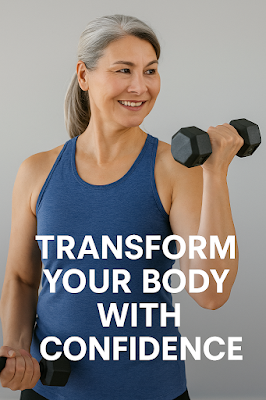Journaling for Emotional Clarity
In today’s fast-paced and noisy world, it’s easy to feel overwhelmed, anxious, or mentally scattered. We rush from task to task without pausing to understand what’s happening within us. Journaling for emotional clarity is a simple yet powerful practice that helps you slow down, reflect, and gain a deeper understanding of your feelings and thoughts.
But what exactly does it mean to journal for emotional clarity, and how can it transform your life?
What is Journaling for Emotional Clarity
Journaling for emotional clarity is the practice of writing down your feelings, thoughts, and experiences to understand them better. Unlike general diary writing, which records daily events, this form of journaling focuses on emotional processing, inner reflection, and gaining clarity about your mental state.
When you journal with the intention of understanding your emotions, you create a safe space to express your true feelings without judgement. It helps you become more aware of your inner world, making it easier to manage stress, handle challenges, and live authentically.
Why is Emotional Clarity Important
Many people go through life feeling confused, stuck, or disconnected from themselves. Lack of emotional clarity leads to:
🔹Overthinking and anxiety
🔹Difficulty making decisions
🔹Emotional reactivity and mood swings
🔹Feeling lost or purposeless
When you gain emotional clarity through journaling, you become aware of your feelings, needs, and desires. You understand why you feel what you feel and what actions you need to take to support yourself better. It creates a sense of peace, confidence, and emotional resilience.
Benefits of Journaling for Emotional Clarity
✨ 1. Reduces Stress and Anxiety
Writing about your worries and fears releases their emotional charge. Journaling acts as a mental detox, reducing overthinking and calming your nervous system. When your thoughts are organised on paper, your mind feels lighter and clearer.
✨ 2. Increases Self-Awareness
Journaling helps you identify patterns in your thoughts and emotions. You begin to notice your triggers, behavioural cycles, and limiting beliefs. This self-awareness empowers you to break negative patterns and replace them with healthier habits.
✨ 3. Improves Decision Making
When you feel confused about a choice, journaling helps untangle your thoughts. Writing down pros and cons, your feelings about each option, and what you truly want brings clarity and confidence to your decisions.
✨ 4. Promotes Emotional Healing
Suppressing emotions can lead to mental and physical health issues. Journaling provides a safe outlet to express pain, grief, anger, or sadness, supporting emotional healing and releasing what no longer serves you.
✨ 5. Boosts Creativity and Focus
By clearing emotional clutter, journaling enhances focus, productivity, and creativity. Your mind becomes free to generate new ideas and solutions, both in work and personal life.
How to Start Journaling for Emotional Clarity
Starting is simple. You don’t need to be a writer or have perfect grammar. The only requirement is honesty and willingness to explore your inner world.
✅ Step 1: Choose Your Medium
Pick a notebook you love, a digital app like Notion or Every note , or even voice notes if you prefer speaking over writing. What matters is consistency and comfort.
✅ Step 2: Set a Regular Time
Morning journaling helps set intentions for the day, while night journaling helps process emotions before sleep. Start with just 10-15 minutes daily.
✅ Step 3: Write Freely Without Judgement
Don’t edit your thoughts. Let them flow naturally. If you feel stuck, write “I don’t know what to write today” until deeper thoughts emerge.
✅ Step 4: Use Journaling Prompts for Deeper Reflection
Here are powerful prompts to gain emotional clarity:
🔺How do I feel right now and why?
🔺What emotions have been coming up for me lately?
🔺What am I avoiding that I need to face?
🔺What do I need to let go of today?
🔺What does my inner child need from me right now?
🔺What makes me feel calm and safe?
🔺What is one small thing I can do to support myself today?
✅ Step 5: End with Gratitude or Affirmation
Conclude your journaling with something you’re grateful for or a positive affirmation like:
“I am worthy of love and understanding.”
“I trust my journey, even when I don’t see the full path.”
This rewires your brain to shift from negative loops to supportive and empowering thoughts.
Journaling Techniques for Emotional Clarity
Here are simple techniques to deepen your journaling practice:
✏️ 1. Stream of Consciousness Writing
Write whatever comes to mind without stopping for 5-10 minutes. This uncovers hidden emotions and thoughts buried under daily noise.
✏️ 2. Dialogue Journaling
Write a conversation between you and your emotions. For example:
You: Why are you feeling anxious today?
Anxiety: I feel unsafe about tomorrow’s meeting.
You: What can I do to make you feel safer?
Anxiety: Prepare well and rest early tonight.
This creates self-compassion and emotional understanding.
✏️ 3. Letter Writing
Write a letter to yourself, to someone who hurt you, or to your future self. You don’t need to send it; it’s a release practice for emotional healing.
Final Thoughts
Journaling for emotional clarity is more than just writing; it’s a journey of self-connection, awareness, and healing. When you take time daily to explore your inner world, you build emotional resilience, peace, and confidence to live life more meaningfully.
Start today. Pick up your pen, let your heart speak, and watch as emotional clarity transforms your life from within.













